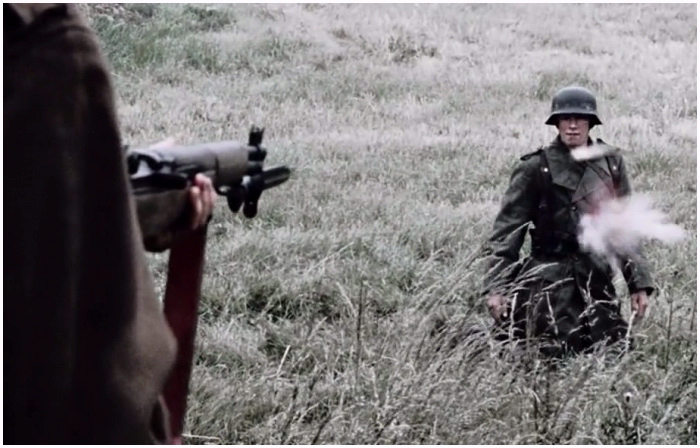
In episode 5, of the TV series ‘Band of
Brothers’, with the title ’Crossroads’, we witness two
action against German SS troops, which took place on October
5, 1944. To reconstruct these actions, some segments had to be
dropped from the story, call it freedom of writing or
Hollywood. But director of this episode, Tom Hanks, made one
of the best parts of the series. ‘Crossroads’ is
halfway the series, and a crucial cross over for Captain Dick
Winters (who would be placed in the staff of 2nd Battalion of
506th PIR).
On this page I will take you with me in the fields where
the actions took place on October 1944. To illustrate the
action, I use, beside my own pictures and drawings, some
stills from the HBO TV series 'Band of Brothers' #5
(Crossroads).
'The
Island'
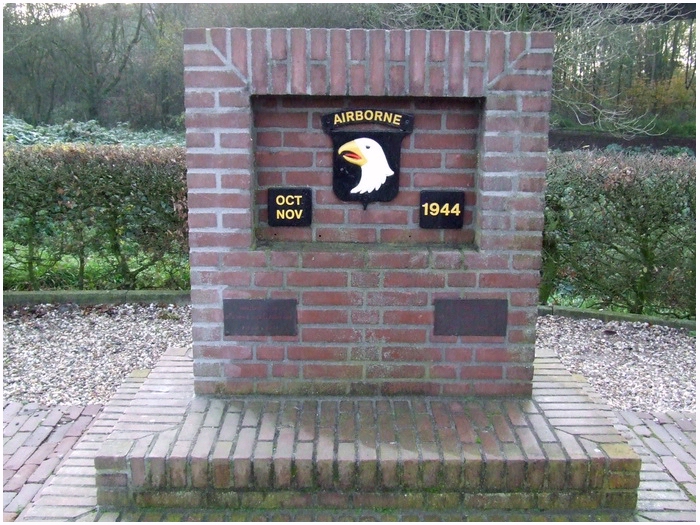
The monument for the 101st
AD on the Drielse Rhine dyke, east of Heteren
(under the
viaduct of the A 50)
On October 2, 1944, Easy Companyof the 506th PIR, 101st
Airborne Division entered their positions on ‘The Island’
(Dutch: ‘Het Eiland’), just north of Zettem. The paratroopers
took up their positions, between Heteren to Opheusden, and
replaced the British 43rd Division, who stayed there after the
loss off Arnhem-Oosterbeek.
October 5, 1944,
'Crossroads'
In the night of October 5, around 03.30 hours, a patrol set
off for a mill, which stood on the dyke towards the ferry to
Renkum. The patrol, which consisted of Sgt. Art Youman, Pvt's
James Alley, Joe Lesniewski, Joe Liebgott en Rod Strohl,
reached the high dyke, which is called Randwijkse Rhine dyke.
Lesniewski crawled to the top, a noticed a group of Germans
around a machinegun. But Lesniewski was also noticed by a
German, who reached for a hand grenade (a ‘potato masher’).
The others in the patrol became aware of German voices to the
north of the dyke,… It was time to leave the scene. But hand
grenades were already on its way towards the paratroopers.
Explosions wounded Alley, who was hit by 32 pieces of shrapnel
into his body. Liebgot and Lesniewski were also hit, but only
minor wounds. Strohl, the man with the radio, was also
slightly wounded, but his radio was made useless by the
explosion.
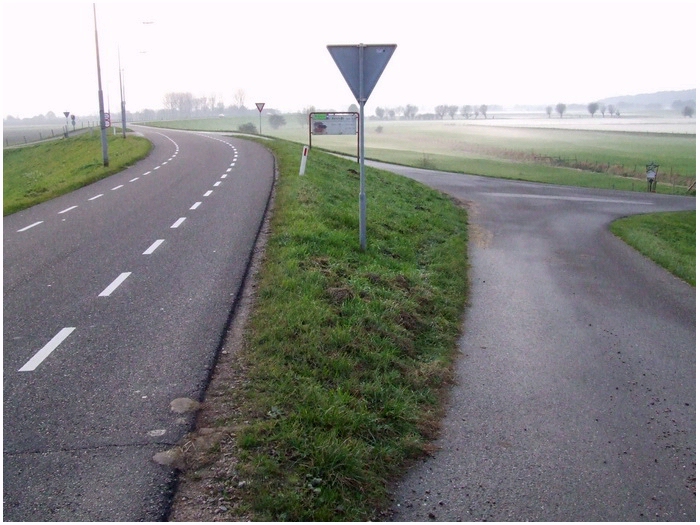
A kilometer west of
Heteren,... 'Crossroads'
The patrol had ran into a company of SS troops, who were
planning a deception for the main attack by the 363
Volksgrenadiers Division, on the left flank of the 506th at
Opheusden. And it was not just a pinprick action, it was a
serious attack, with the purpose to clear ‘The Island’ of
Allied troops.
After a kilometer of fast running, the patrol was back at
the Command Post at 04.20 hours. Captain Winters organized at once a
larger patrol of fifteen men, and he himself would be in charge.
When the new patrol reach the dyke, they could hear the
German machinegun, a MG 42, open fire. Bullets were flying to
the south, into no-man’s-land. Winters wondered about this,
there were no targets to shoot at. This was part of the
deception which was in progress. After a check on the
situation, Winters ordered the patrol to cross the dyke to the
north side, and to go into a ditch where they could move more
or less freely.
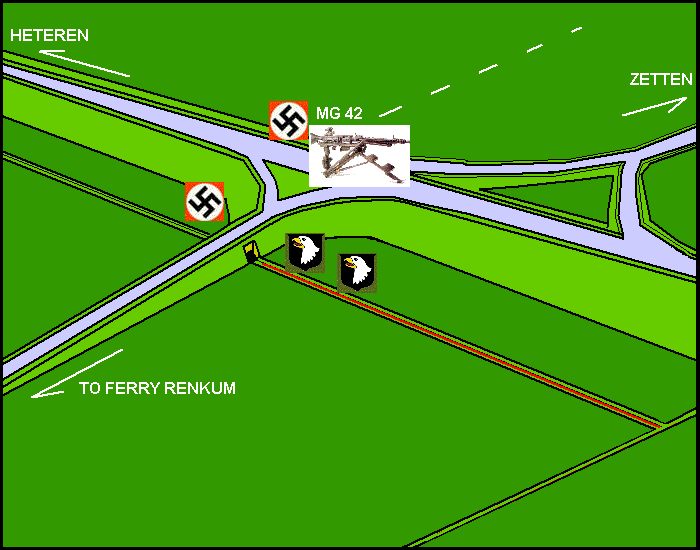
The first action to take
the MG 42 out
At 20 meters before the low dyke which runs towards the
Neder-Rhine, Winters moved on his own to the culvert in that
dyke. Against the nightly sky he could make out the
silhouettes of the Germans at the machinegun. On the other
side of the low dyke, he could hear German voices. Winters
returned to his men, and ordered to take up positions at the
low road, where he pointed out their targets. Christenson was
given the task to use his .30 machinegun on the German MG 42.
Sgt. Muck and Pvt. Penkala placed their 60mm mortar just
behind Christenson.
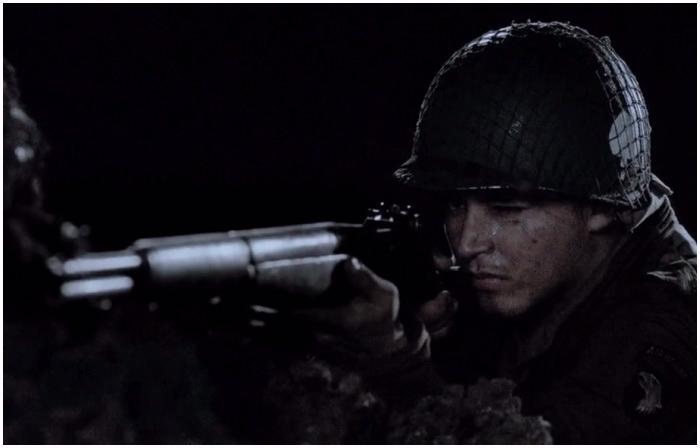
The men aim their rifles on
the MG 42 position
When Winters counted; ‘ready, aim, fire’,.. 12 rifles fired
as one, and seven Germans fell around the MG 42. Christenson
his machinegun cracked, but his aim was too high, but Muck and
Penkala their mortar was already on its way, and before
Christenson could adjust his line of fire, the mortar smashed
atop the MG 42. Within seconds the action ended, and the small
group retrieved into their jump off position, into the ditch.
From the low dyke, some rifle fire was coming towards the
paratroopers, but far from accurate. After the 200 meters
through the ditch, the troopers came at another ditch, which
ran parallel on the low dyke, and here the troopers
consolidated.
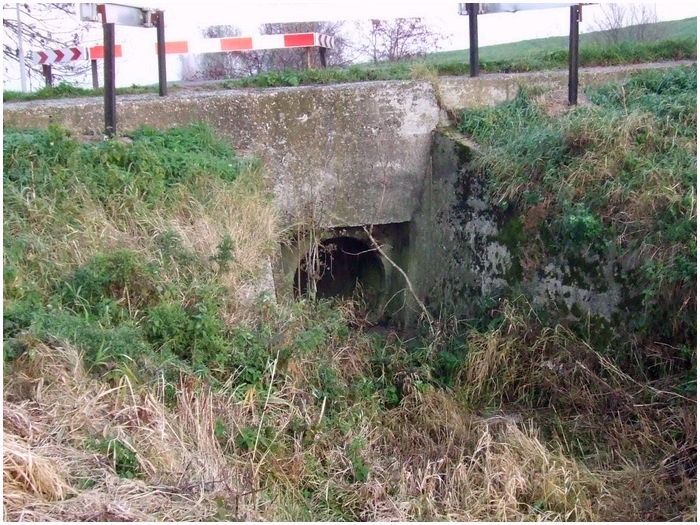
The culvert underneath the
low dyke, from where the rifle grenade was fired
which
became fatal for Sgt William Dukeman
Out of reach for German fire, Winters used the radio to
order the rest of the first platoon, and the attached light
machineguns, to joint hem in the ditch. Waiting on the others,
daylight was coming and Sergant
William Dukeman rose up from the ditch to
order the men to spread out. At that moment, a couple of
Germans, hiding in the culvert, shot a rifle grenade. The
explosion drove a piece of shrapnel through the shoulder and
into the heart of Dukeman. The paratroopers fired their M1
Garand rifles empty on the culvert, and killed three Germans.
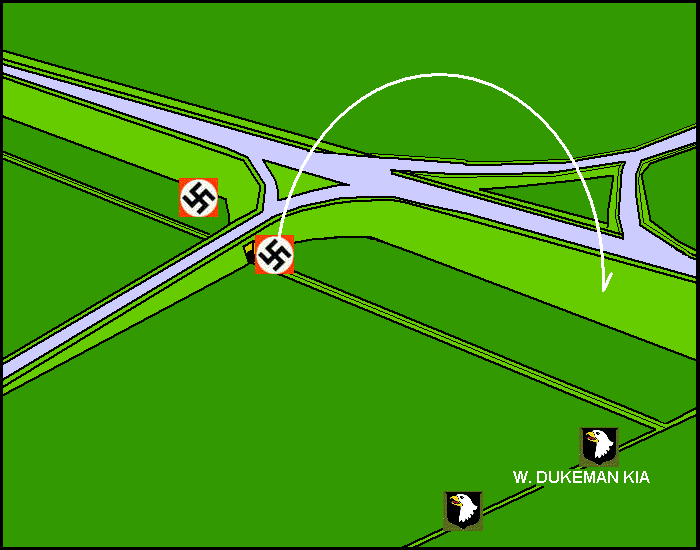
Situation how Sgt W.
Dukeman got killed,...
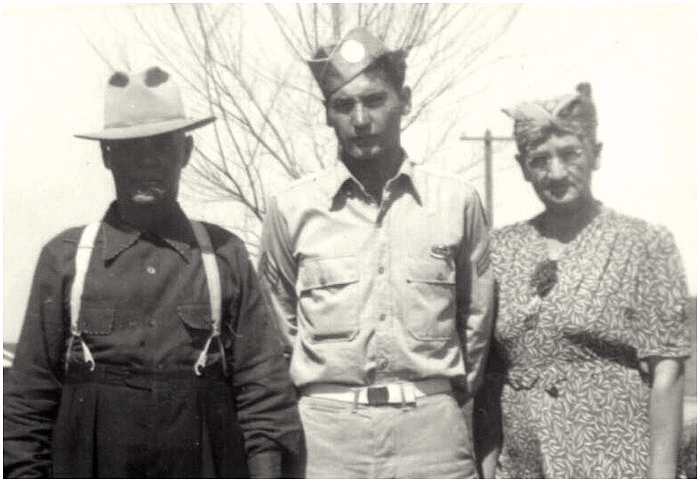
William Heiter Dukeman Jr
(2 Sept. 1921 – 5 Okt. 1944)
(Left; Father William Dukeman Sr and right, Mother Gertrude)
Winters asked himself, what the Germans were up to. His men
were in a ditch, and the Germans behind a heavy dyke. To pull
back was now out of the question, because daylight came in
fast, and his men would be sitting ducks if they moved away.
And then there was the danger of the Germans on the south side
of the dyke would move end encircle the troopers. The only
thing Winters could think of was a straight forward attack,
once again towards the low dyke that led to the Renkum ferry.
Meanwhile, the reinforces had arrived and moved into position.
The unit consisted of 30 men.
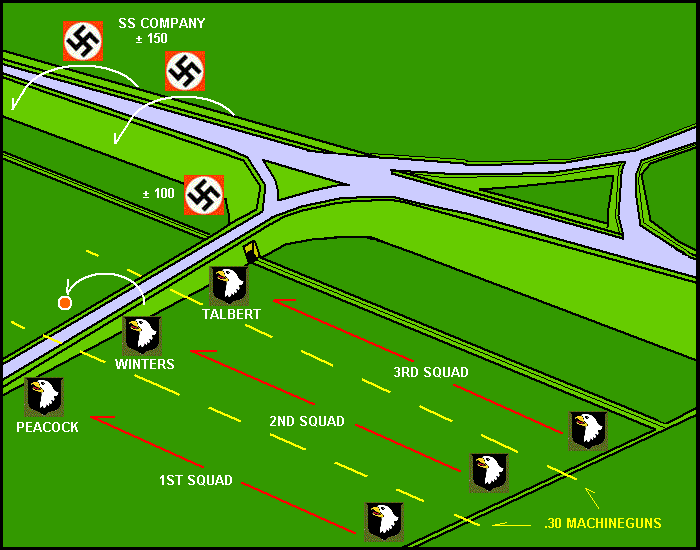
The second action of
October 5, 1944
Winters split the Group in three parts. 1st squad on the
left flank, under command of Lt. Thomas Peacock. Sgt. Floyd
Talbert would lead 3rd squad on the right flank, with 2nd
squad in the middle, led by Winters himself. Between these
groups was Lt. Frank Reese, after consultant with Winters,
busy with placing .30 machineguns. Peacock would give the
signal for the attack, by lighting a smoke grenade, Winters
would give Peacock with a hand signal the go ahead. Bayonets
were fixed, and the tension was in everyone their bodies.
Winters gave his first sign, and stood up, en began running
towards the low dyke. Peacock threw the smoke grenade and the
men started also to run through the wet grass.
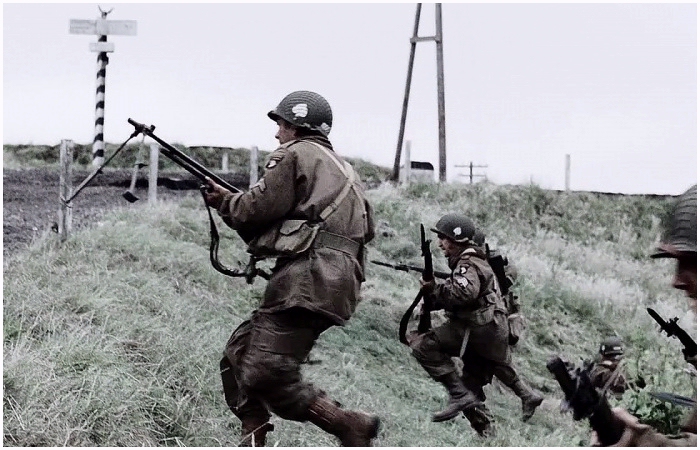
In a few moment the
shooting gallery will be opened
The .30 machineguns opened fire towards the low dyke, to
hold peaking Germans at bay. Winters was the first to reach
the low dyke, and saw a lone German flat on his belly. In the
corner of his eyes, Winters noticed at the same moment at
least a 100 Germans curled up in the corner of the dyke.
Winters jumped back behind the low dyke, and pulled the pin
from a hand grenade (a scene not in Band of Brothers episode),
and threw it over the top of the dyke towards the lone German.
This German threw a grenade as well towards Winters. But
before this one exploded, Winters was already on top of the
dyke, because he knew, his grenade would not go off, because
Winters taped his grenade for safety reasons (a scene which is
in the episode of BoB), and now he had forgotten to remove the
tape. The German waited for the explosion in a bent position,
and because of that, he noticed too late that Winters was back on the dyke, just a
few meters away. The German rose, but Winters fired from the
hip, and shot him. This shot, brought the whole bunch of
Germans in movement, something Winters would later describe as
in ‘slow motion’. Every German to his right glanced towards
Winters, and they started to rise to their feet. And still the
other men were not yet at the low dyke, so Winters began
shooting towards the confused Germans.
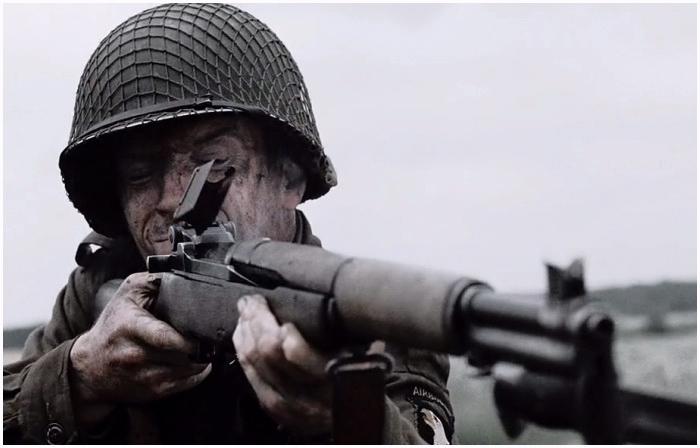
Winters his Garand used
clip after clip,…
(Damian Lewis in the role of Dick
Winters)
Winters jumped again behind the west side of the dyke, and
shot another clip empty in the German Group. It was chaotic
overthere. Some Germans tried to fire their weapon, others
tried to retrieve towards the east. Germans that were aiming
their guns, were run over by fleeing Germans. When Winters put
a third clip into his Garand, the first troopers reached also
the low dyke. The machineguns had stopped shooting and the
gunners were now also running towards the low dyke. It was a
shooting gallery for Easy Company. A group of eleven Germans
were enclosed, and David Webster shouted to them to surrender.
The Germans told Webster they were Polish. Webster motioned
them to move to the rear of him. Webster was just going back
to the low dyke, when he was hit by a bullet. It was a clean
wound through his calf, a so called ‘million dollar wound’,
wounded, but not seriously. The medic Eugene Roe put a bandage
on Webster and sent him to the rear.
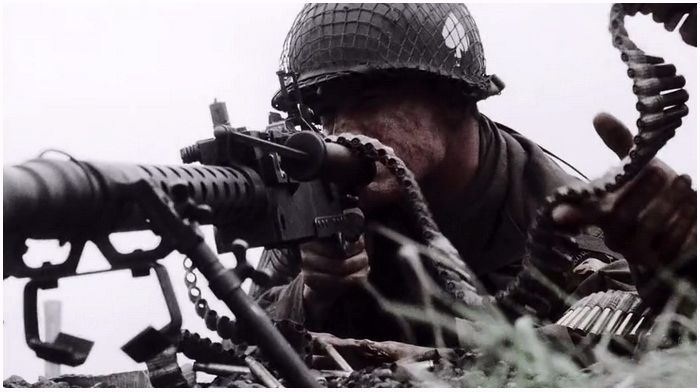
An M1919a6 .30 machinegun
cracks in 'Crossroads'
Meanwhile, some hundred meters to the east, 150 Germans of
a SS company started to come over the dyke. These were waiting
on the south side for their attack, but were now interrupted
by a firefight to the north of the large dyke. The.30
machineguns were also now at the low dyke and fired into the
large group of fleeing Germans. A great part of them reached a
group of trees, and Winters realized that they were heading
for the ferry crossing to Renkum, the road the had taken to
come here in the first place.
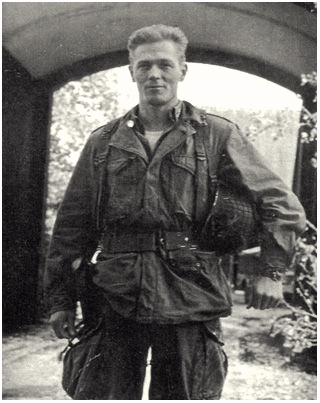
Right:
Captain Dick Winters
Winters asked at once by radio for artillery. British guns
were letting lose their shells on the fleeing Germans. Winters
was planning to reach the ferry, before the Germans could
reach it, but a group of 35 men, against at least 150 pissed
Germans, that was a little to much. Winters asked for
reinforcements and the 2nd Battalion promised to provide Fox
Company as fast as possible. When they arrived, Winters
started to discuss how they could move fast the 600 meters to
the ferry crossing. A basis was made with 30 men, another 30
would move up, under cover of the base. Every hundred meter
they would make such a jump forward.
But the waiting for the reinforcements had taken a lot of
time, and at least 75 Germans had regrouped. Two hundred
meters in front of the crossing, were a couple of factory
buildings, from where from the right Winters his men were
exposed. To make matters worse, German artillery was coming
down on them. It was time to retread and pul Easy back from
the mayhem. Winters his plan had been a bit too enthusiastic.
The troopers moved back the same way, as they started the
attack, with jumps of hundred meters. When the last man
crossed the dyke, the German artillery was shot in, and shells
came down on that point. The troopers ran left and right, but
there were many wounded.
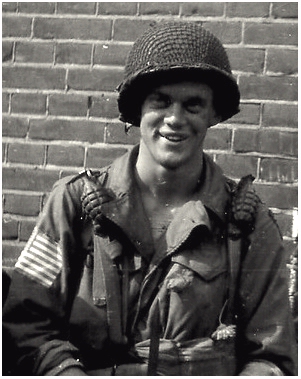
Left:
David Kenyon Webster
David Webster, who struggeled wounded throug a field, was
shot at. A 8,8cm gun opened up on him. On both sides of him,
shells were exploding, and a third one behind him. Before a
fourth one good finish him of, Webster managed to get out of
that field. Men from Fox Company found Webster, stopped a Jeep
to put Webster in it,… So Webster may have thought, but Sgt.
Boyle, lay in the back, wounded from German shelling, so
Webster was laid on the hood of the Jeep.
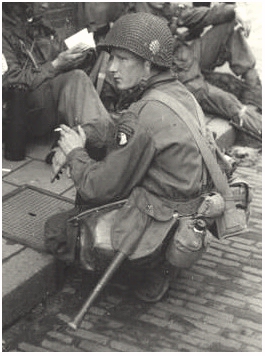
Right:
Joseph 'Joe' Liebgott
Because of the
German artillery, 18 paratroopers from Easy- and Fox Company
were wounded by the German shelling. A total of 22 troopers
were wounded that day, October 5, and one man killed, William
Dukeman. On the German part, at least 50 killed and 100
wounded, and eleven were taken prisoner.
The eleven prisoners were by order of Winters taken to the
rear by Joe Liebgott. He chose for Liebgott because he was
wounded and could after dropping of the prisoners be treated
by a doctor at the command post of the battalion. Winters
remembered suddenly that Liebgot was rough with prisoners, and
when he heard Liebgott say; ‘Oh boy, I’ll take care of them’,
vhe told Liebgott that eleven prisoners were to be counted for
at the command post, and not one less. Liebgott protested.
Under the eyes of the POW, Winters ordered Liebgott his Garand
to be emptied of bullets and to leave extra ammo behind.
Pissed off, Liebgott removed the clip from his rifle. One shot
stayed in the chamber of his rifle. (In the episode of BoB,
Winters takes the weapon of Liebgott, removed the ammo, and
places one in the chamber). Winters told Liebgott that if he
shot one German, the other ten would jump him. From the corner
of his eye, he noticed that a German officer relaxed after
this little show. When Winters later checked, it was confirmed
that Liebgott had delivered eleven prisoners at the CP.
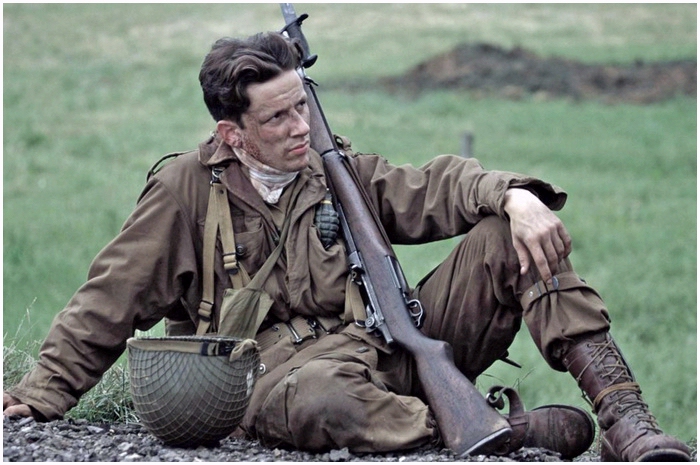
Ross McCall in the role of
Joe Liebgott
(A publicity still from 'Band of
Brothers')
After the battle at the crossroads, Winters concluded that
the Germans were badly led. After the nightly attack on the MG
42 machinegun the Germans had not spread out, and had
neglected to place observation posts. After consolation, after
the first action, Winters and his troopers were for an hour
waiting in a ditch. During this period, the Germans could have
surrounded them and could have attacked them from the flank
and rear. If this had happen, Winters and his men would have
been sitting ducks. But the Germans were hesitating, and were
on the run when the first shots rang out.

Covered in fog, the trees
where once Germans on the run were hiding
and escaped to
the ferry of Renkum and back over the
Neder-Rijn
In the rapport Winters made, the ‘I’ sentence was not used.
He came to the conclusion that every trooper in his outfit had
shown a professional attitude, and so, the rapport was written
in the ‘we’ sentence. With this, he did himself far too short.
In eyes of many, the action at Brécourt Manor, on June 6,
1944, under Winters his leadership, to eliminate four German
guns, was a textbook action. But Winters himself thought that
the action, now known as ‘Crossroads’, was his best
operational action, a highlight of his leadership. During
operations, Winters was always the first to go. His own
safety, was never above that of his men. An attitude which had
made him a candidate for the highest award known in America,
the Congressional Medal of Honor, but it was not to be, also
because of the modesty of the man.
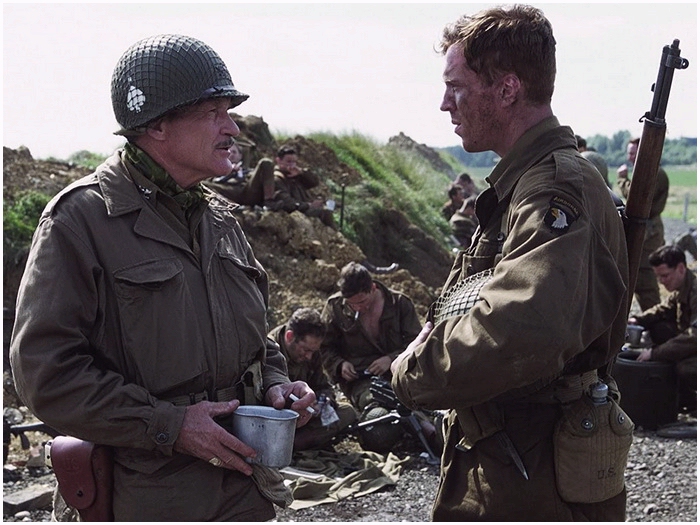
Col. Sink (Dale Dye) asks Capt. Winters to lead 2nd Battalion
Around the same time as Winters and his men were fighting around the
crossroads, the headquarters of 2nd Battalion at Opheusden was
attacked, which caused a lot of casualties. One of the
casualties was Major Ollie Horton de X.O. of 2nd Battalion.
Shortly after the action at the crossroads, Colonel Sink asked
Captain Winters to replace the spot of Horton.
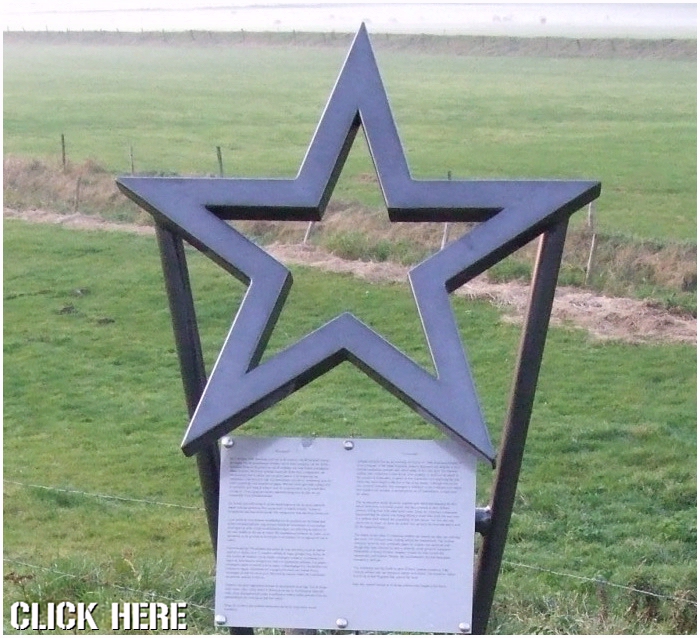
The monument under the dyke
near the 'Crossroads'
(in the back, the ditch used in the
first action)
(CLICK on the picture for enlargement)
For the attack by the 363 Volksgrenadiers on the 506th
battalion HQ at Opheusden on October 5, 1944, I recommend the
book ‘The Road to Arnhem’ by Donald R. Burgett (from page
141).


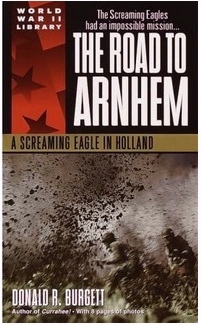
RETURN
|